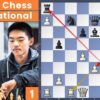In the high-stakes theater of global football, transfer windows often resemble a complex game of chess, where every move has a ripple effect across the board. The latest maneuver capturing headlines involves Liverpool`s Uruguayan striker, Darwin Nunez, and the Saudi Arabian powerhouse, Al-Hilal. Whispers are escalating into concrete proposals, suggesting a significant bid is imminent, a development that could reshape not just Nunez`s career, but the transfer strategies of several elite clubs.
The Saudi Surge: A New Financial Gravity
Al-Hilal, one of the four Saudi Pro League clubs operating under the vast financial umbrella of the Public Investment Fund (PIF), is reportedly preparing an offer for Nunez valued around $80 million. This figure, while substantial, highlights the transformative power of Saudi wealth in modern football. For context, it would represent their second most expensive acquisition, surpassed only by the astronomical sum committed to Neymar two years prior. This isn`t merely about buying players; it`s about strategic acquisitions designed to elevate the league`s global profile, attracting both talent and eyeballs with seemingly unfathomable sums.
The Saudi Pro League`s aggressive pursuit of top-tier talent has become a defining characteristic of recent transfer windows. It introduces a new dimension of competition for European clubs, not just on the pitch, but in the fiercely competitive market for player signatures. The PIF`s deep pockets allow them to enter discussions for players previously considered out of reach for non-European leagues, fundamentally altering the traditional balance of power.
Nunez`s Anfield Chapter: A Conundrum of Potential
For Darwin Nunez, the proposition from Al-Hilal arrives at a fascinating juncture in his career. Since his arrival at Anfield in the summer of 2022, a move that commanded a then-club record fee of $115.6 million, Nunez has been a figure of both immense promise and palpable frustration. His tenure at Liverpool has been marked by flashes of brilliance—moments of raw power and clinical finishing—interspersed with periods of inconsistency and missed opportunities. Across 143 appearances, his 40 goals and 26 assists demonstrate a tangible contribution, yet the lofty expectations tied to his price tag have often overshadowed these figures.
Last season, despite Liverpool`s Premier League title triumph, Nunez found himself a relatively peripheral figure, starting only eight games. This perceived underutilization, coupled with the pressure of a colossal transfer fee, has perhaps prevented him from fully unleashing the potential that made him such a coveted target. A move to Al-Hilal, with a reported salary offer of at least $35 million a year, could represent a monumental financial uplift and a chance for a fresh start, away from the intense scrutiny of the Premier League spotlight. Football, much like life, rarely adheres to neatly written scripts, and sometimes, a change of scenery is precisely what a talent requires to flourish.
The Grand Transfer Domino: A Chain Reaction
The potential departure of Nunez is not an isolated event; it is a critical piece in a complex transfer domino. Should Liverpool recoup a significant portion of their investment in Nunez, it would substantially bolster their financial armory for other strategic targets. Paramount among these is Newcastle United`s prolific forward, Alexander Isak. Liverpool reportedly saw a substantial offer of $146 million for Isak rejected just recently, indicating their serious intent.
This dynamic creates a fascinating chain reaction: if Nunez leaves, Liverpool is strengthened in their pursuit of Isak. Should Isak depart Newcastle, the Magpies, also PIF-owned, would then be in the market for a replacement. Interestingly, Newcastle`s manager, Eddie Howe, has already acknowledged the “far from ideal” situation surrounding Isak, with the club reportedly eyeing Benjamin Sesko as a potential successor. This intricate dance of targets and counter-targets showcases the interconnected nature of the modern transfer market, where one player`s potential move can set off a cascade of negotiations and strategic decisions across multiple top clubs.
It`s a testament to the market`s current state that players like Victor Osimhen and Benjamin Sesko were initially on Al-Hilal`s radar before Nunez emerged as the primary target, demonstrating the fluidity and competitiveness of identifying and securing elite strikers. Neither Osimhen, who favored a return to Galatasaray, nor Sesko or Isak, were reportedly keen on a move to Saudi Arabia, highlighting that while money is a powerful motivator, it is not always the sole determining factor for top talent.
The Allure of the Gulf: A Player`s Predicament
For a player like Nunez, the decision is multifaceted. On one hand, there`s the sporting ambition of competing at the highest level in European football, potentially reclaiming a starring role at a club like Liverpool or proving himself at another European giant like AC Milan, who have also expressed interest. On the other, there`s the undeniable financial security offered by a Saudi contract—a salary that could fund a small nation`s annual budget. It`s a fascinating, if not entirely novel, conundrum faced by many players in recent years.
The fact that Nunez has reportedly “not dismissed the possibility” of a move to the Pro League indicates a pragmatic consideration of his options. In an industry where careers can be short and unpredictable, securing generational wealth is a significant draw, even if it means stepping away from the traditional pinnacle of European club football.
Conclusion: A New Era of Transfer Dynamics
The potential transfer of Darwin Nunez to Al-Hilal is more than just a player changing clubs; it is a microcosm of the evolving global football landscape. It underscores the immense financial power now wielded by Saudi clubs, their strategic intent to become major players on the international stage, and the consequent ripple effect on the established European elite. As the transfer window progresses, the unfolding saga of Nunez and the interconnected pursuit of other top strikers will serve as a compelling narrative, reminding us that the transfer market, it seems, is less a sport and more a high-stakes, multi-dimensional chess match played out with real athletes and monumental sums of money.








